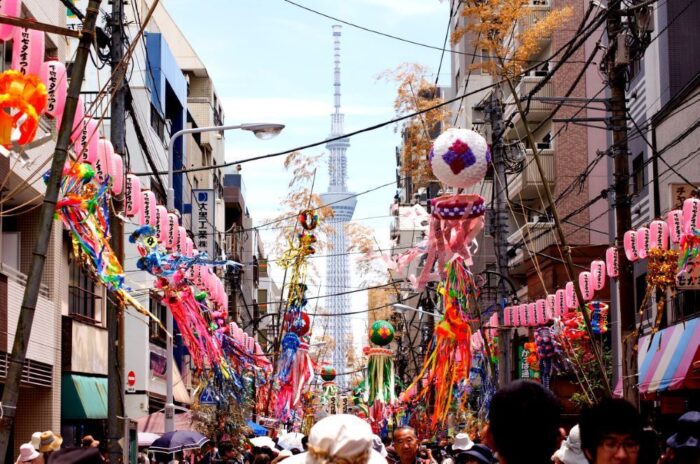It gets pretty snowy in the winter up in Akita Prefecture, at the northern tip of the mountainous Tohoku region on Japan’s main island of Honshu. February gets the deepest snow, and it’s traditionally a time of impassable snow drifts and snowbound isolation. Nowadays the roads are rarely blocked for long, but the people of the city of Yokote maintain the area’s long-standing tradition of building “kamakura,” little igloo-like snow houses, to spread a little cheer in the wintry darkness, offer some hospitality to travel-weary deities, and usher in the new year (the lunar new year, that is).
In olden times, the practice was also a good excuse to spend a few days living simply in a little hut away from the temptations of everyday life. These days, however, the rites mostly involve small children, like Christmas celebrations in the West.
The kamakura themselves are little huts hollowed out of mounds of packed snow; a small entrance gives access to a wide space inside. To build them, first mounds of snow are built up and stomped on to compact the snow, which is then built into a dome about 2 meters high and hollowed out. Inside the kamakura, in the back, is carved an altar for the water god (though the area gets a lot of snow, it doesn’t get much rain in the summer), and children use it to pray for abundant harvests, the safety of their family members, protection against fire and academic success. At night, children sit in them on straw mats toasting “o-mochi” sticky rice over little “hibachi” charcoal burners and invite passersby in to drink “amazake,” a sweet, nonalcoholic drink made of fermented rice. It’s warm and cozy inside, and seen from outside the kamakura are a beautiful sight — glowing in the candlelight, they seem to float in the darkness.
The city of Yokote is blessed with heavy snowfall in the winter — 20-30 cm of snow in a night is not unusual. The Kamakura Festival puts this bounty to good use — residents build about 80 kamakura for the festival, each one big enough for four or five visitors, and they line the streets and in the park in the middle of town. They also build about 3,000 mini-kamakura about 50 cm tall, which they light up in the evenings. The festival takes place on Feb. 15 and 16, and is now one of the best-known festivals in Akita.
The practice of building kamakura dates back to the Edo Period. The techniques for building snow huts go back long before then, since they were (and still are) handy emergency dwellings for people caught in the snow in the mountains. No one knows much about their religious history. They were probably developed as seasonal shrines to the god of water, hence the “saidan” or little altar shelf built into one wall inside the kamakura, where people place offerings of fruit.
The festival has become rather famous over the years, and last year it attracted 220,000 visitors from all over the world. With numbers like those, the local government naturally takes the tourism-boosting power of the little snow huts pretty seriously. They’re even making the kamakura a year-round experience — in the Kamakura Friendship Center adjacent to Yokote City Hall, in a glass-sided refrigerated room, are always a few kamakura, made from the last snows of the year and preserved at a temperature of -10 C, where, even in the heat of summer, people can get dressed up in traditional winter garb (half-coats and straw boots), sit down with some amazake, and chill.



